 24Mar2018
24Mar2018
3 Nights in Rome: Program for 72 hours to See the Best of Rome
Written byRenata Jirasova24 Mar. 2018Going to Rome for the first time and only for three nights? In this case, you need a perfect plan to see the most interesting places in a short time. And here is it – the complete 3-day walking tour program! You can go everywhere by metro and then just walk. So prepare good and comfortable shoes!
Program for the 1st day (4 km hike):
Metro station: Colosseo (line B)
- Explore Piazza del Colosseo and surroundings:
- Basilica di San Clemente - Colosseum - Arco di Constantino, surrounding of Forum Romanum - via Sacra - Augustus Forum - Trajan´s Forum - Trajan´s column - Altare della Patria - Bocca della Veritá

San Clemente is a stunning basilica from the 12th century, built on the top of the church from 4th century (Yes, it is correct. There are two churches built one above the other!) To walk down under the basilica is a hugely atmospheric experience: there is a labyrinth of aisles, rooms, you hear and see running water... and you really feel that you are going back in time. The church keeps a siesta and opening hours are 9-12:30 and 15-17:30.
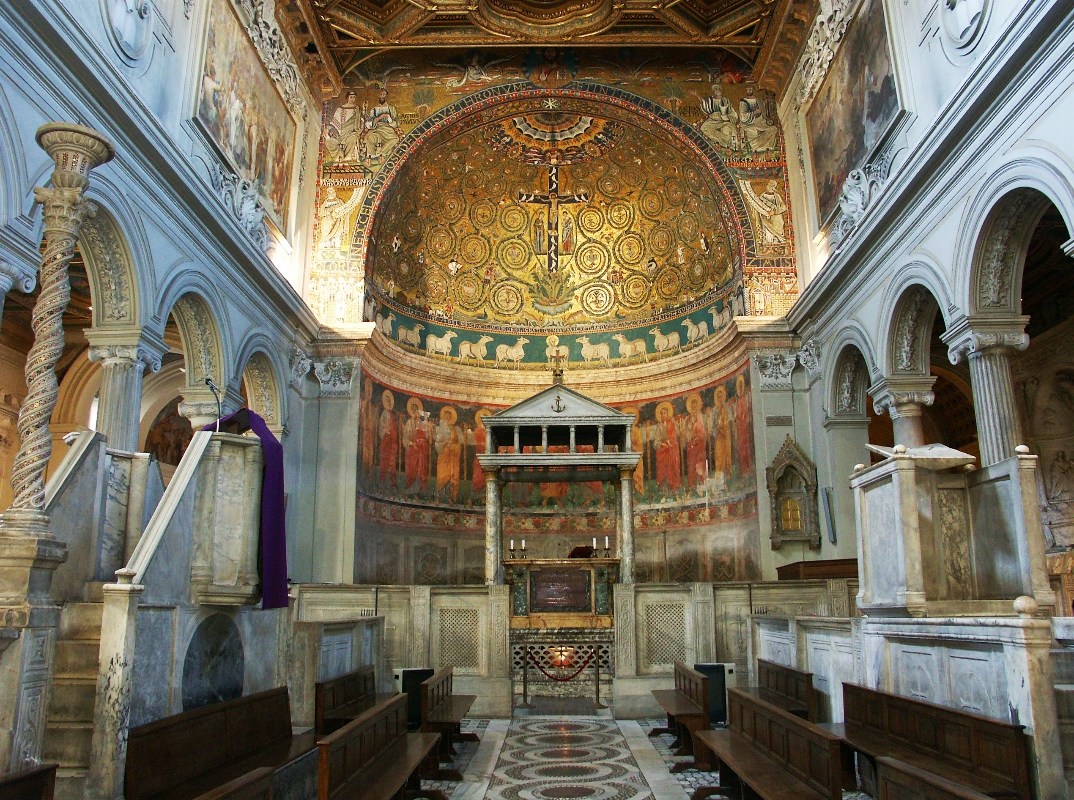 Basilica di San Clemente from 12th century was built on the church from the 4th century (accessible by walking downstairs).
Basilica di San Clemente from 12th century was built on the church from the 4th century (accessible by walking downstairs).
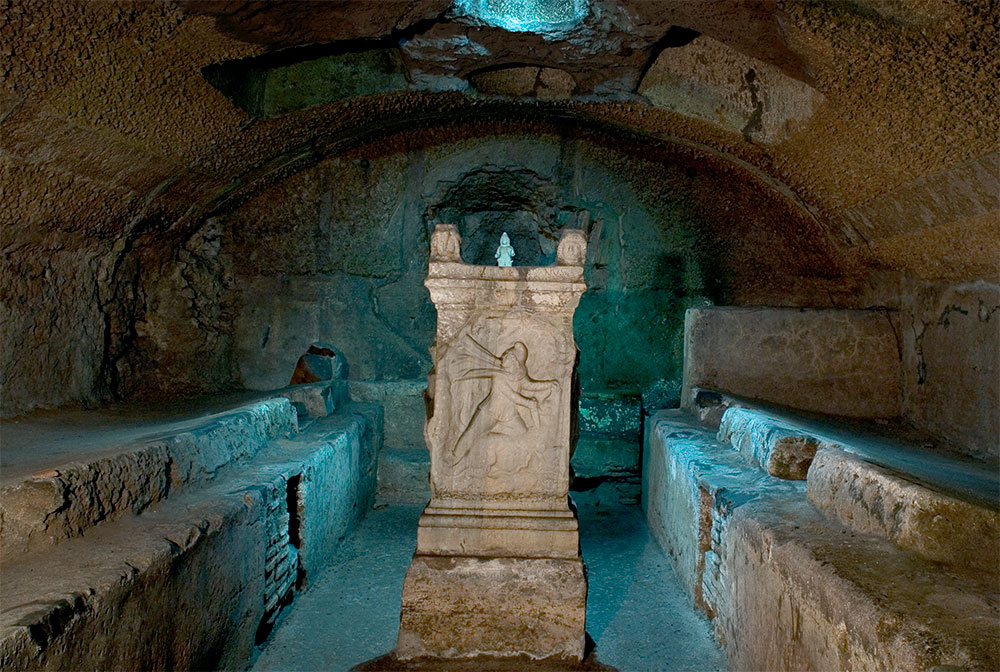 Under Basilica di San Clemente you will discover labyrinth of aisles, rooms and you will hear and see running water... It was originally the church built in 4th century.
Under Basilica di San Clemente you will discover labyrinth of aisles, rooms and you will hear and see running water... It was originally the church built in 4th century.
It is imposible to go to Rome and doesn´t visit the most iconic building, the Colosseum, the cultural, political and commercial centre of ancient Rome. The construction began in AD 72 during the reign of the Emperor Vespasian, who had taken up the throne after the death of Emperor Nero, and was completed by his son, Titus, in AD 80. The Colosseum was designed especially for gladiatorial games and various public performances. The amphitheater served its purpose for almost 500 years, until the 6th century.
 Arco di Constantino and Colosseum. The triumphal Arch (Arco di Constantino) was erected by the Roman Senate to commemorate Constantine´s victory over Maxentius at the battle at Milvian Bridge in 312.
Arco di Constantino and Colosseum. The triumphal Arch (Arco di Constantino) was erected by the Roman Senate to commemorate Constantine´s victory over Maxentius at the battle at Milvian Bridge in 312.
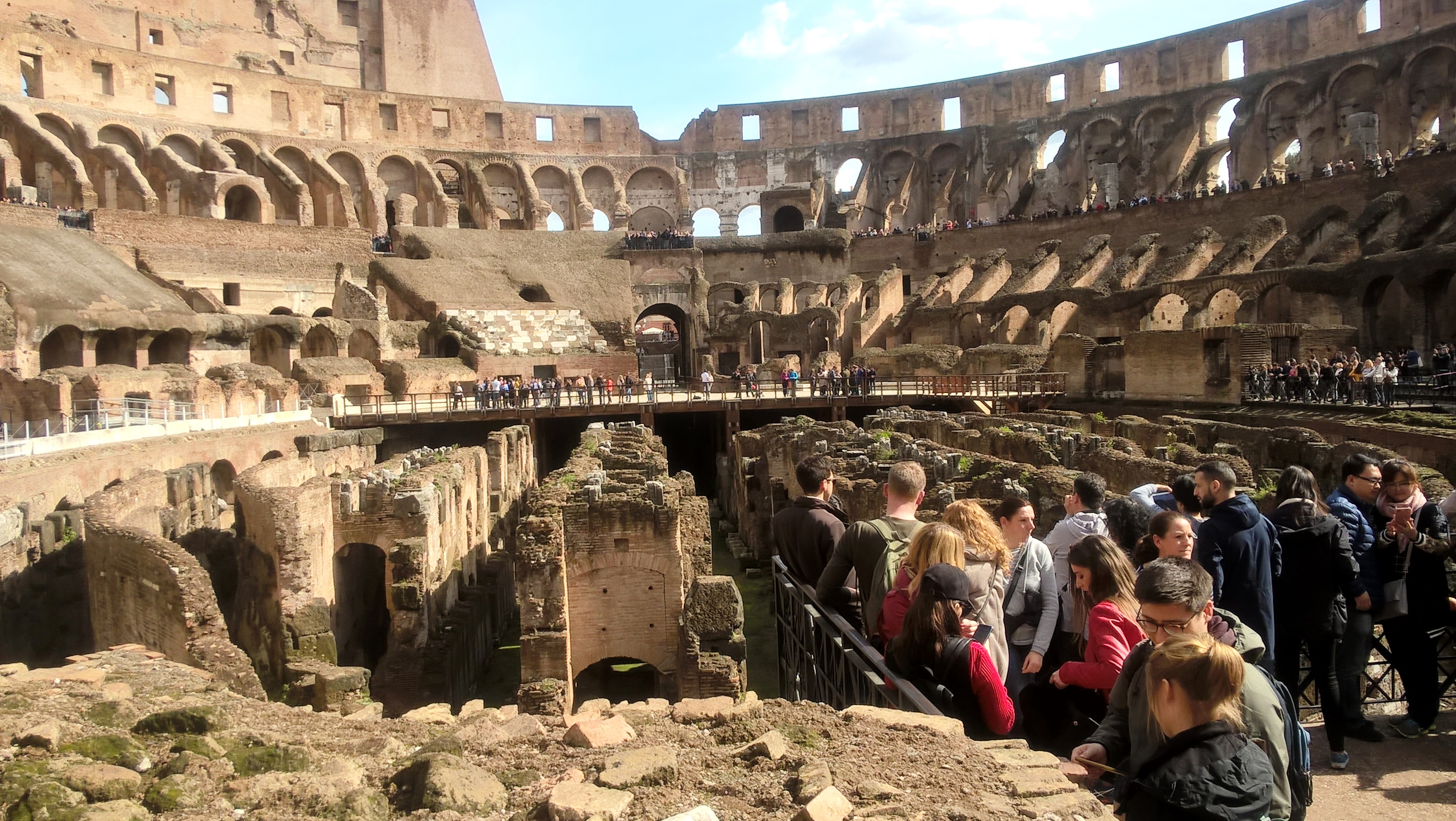 Inside of the Colosseum
Inside of the Colosseum
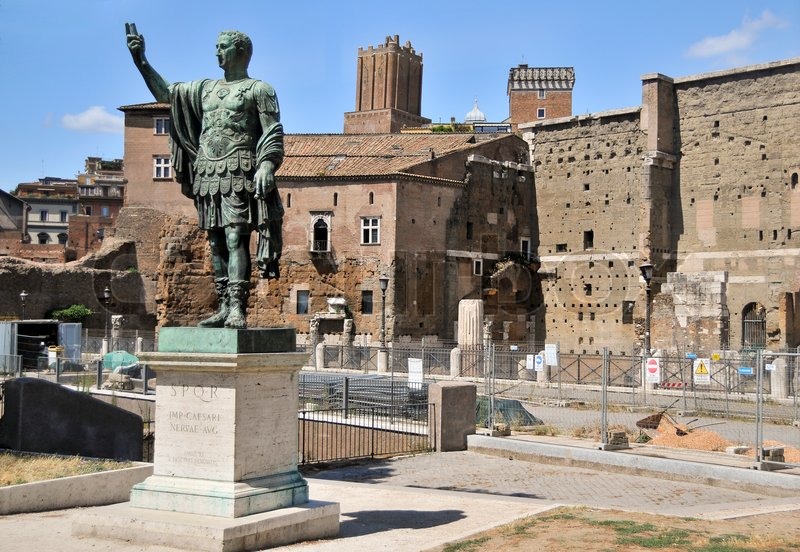 The sculpture of Augustus Caesar (63BC-14AD) - the founder of the Roman Empire and the 1st emperor, in front of the Forum on Augustus, Piazza del Grillo 1, Rome
The sculpture of Augustus Caesar (63BC-14AD) - the founder of the Roman Empire and the 1st emperor, in front of the Forum on Augustus, Piazza del Grillo 1, Rome
 Trajan's Forum, Rome. Traianus (98-117 AD) was one of the greatest Roman emperors. The Roman Empire reached its greatest territorial extent under Trajan. The most famous part of Trajan's Forum is the Trajan's Column, which commemorates Trajan's victory in the Dacian Wars.
Trajan's Forum, Rome. Traianus (98-117 AD) was one of the greatest Roman emperors. The Roman Empire reached its greatest territorial extent under Trajan. The most famous part of Trajan's Forum is the Trajan's Column, which commemorates Trajan's victory in the Dacian Wars.
The National Monument of Victor Emmanuel II also known as The Altar of the Fatherland (Altare della Patria) is a neo-classical building made of white Brescia limestone (135 m wide and 70 m high), located between piazza Venezia (Venetian square) and Campidoglio (Capitoline hill). The structure was built between 1885 and 1911, according to the design of Giuseppe Sacconi, in honor of Victor Emmanuel II. (the 1st king of Italy) and symbolizes the unification of Italy. The monument holds the Tomb of the Unknown Soldier with an eternal flame, built under the statue of goddess Roma after World War I. For a fee of 10 EUR you can go by lift to the big open-air terrace and enjoy panoramic, breathtaking views of Rome.
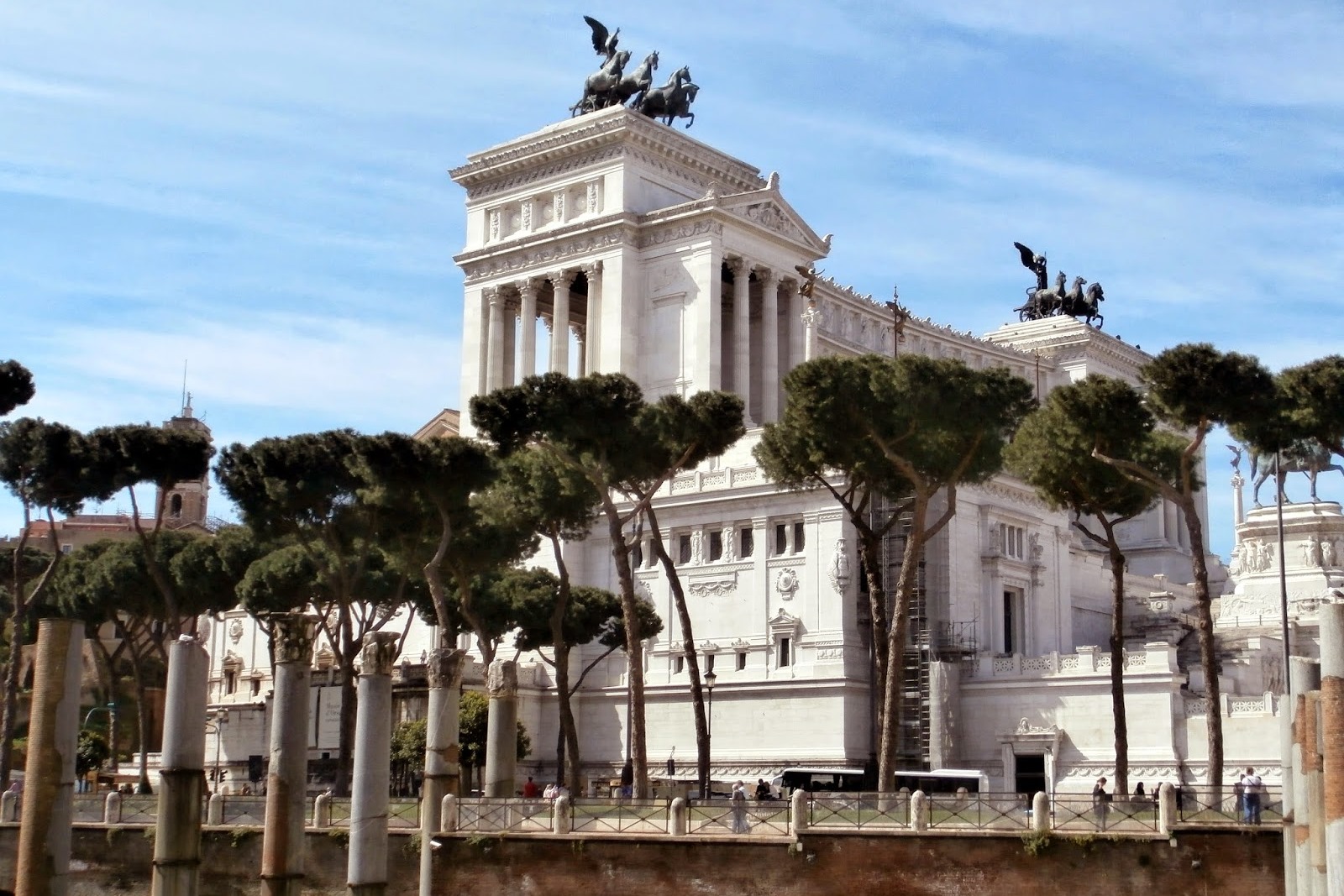 The neo-classical building of Altare della Patria (built 1885-1911) in honour of Victor Emmanuel II., the 1st king of a unified Italy
The neo-classical building of Altare della Patria (built 1885-1911) in honour of Victor Emmanuel II., the 1st king of a unified Italy
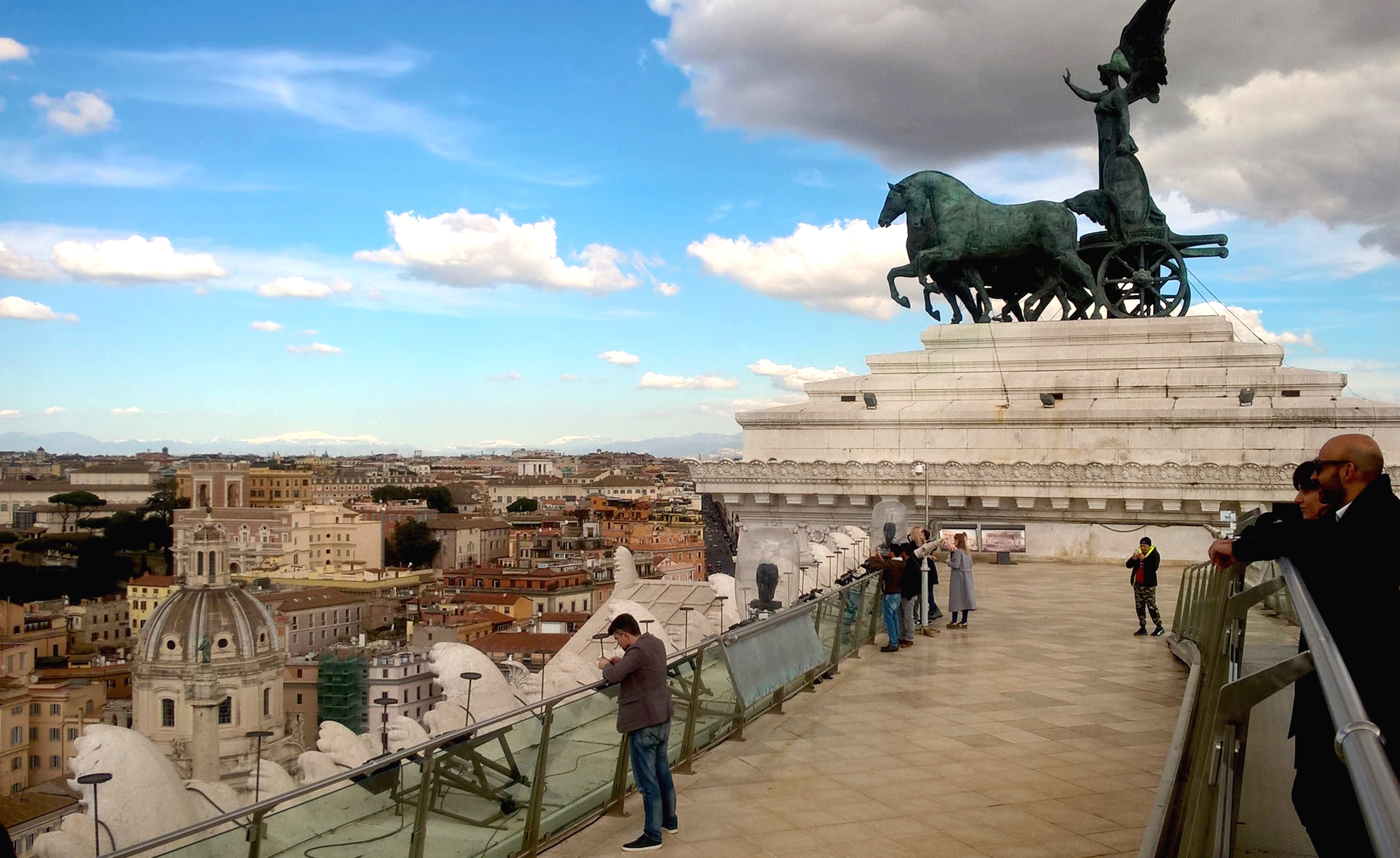 On the rooftop of the Altare della Patria, left side
On the rooftop of the Altare della Patria, left side
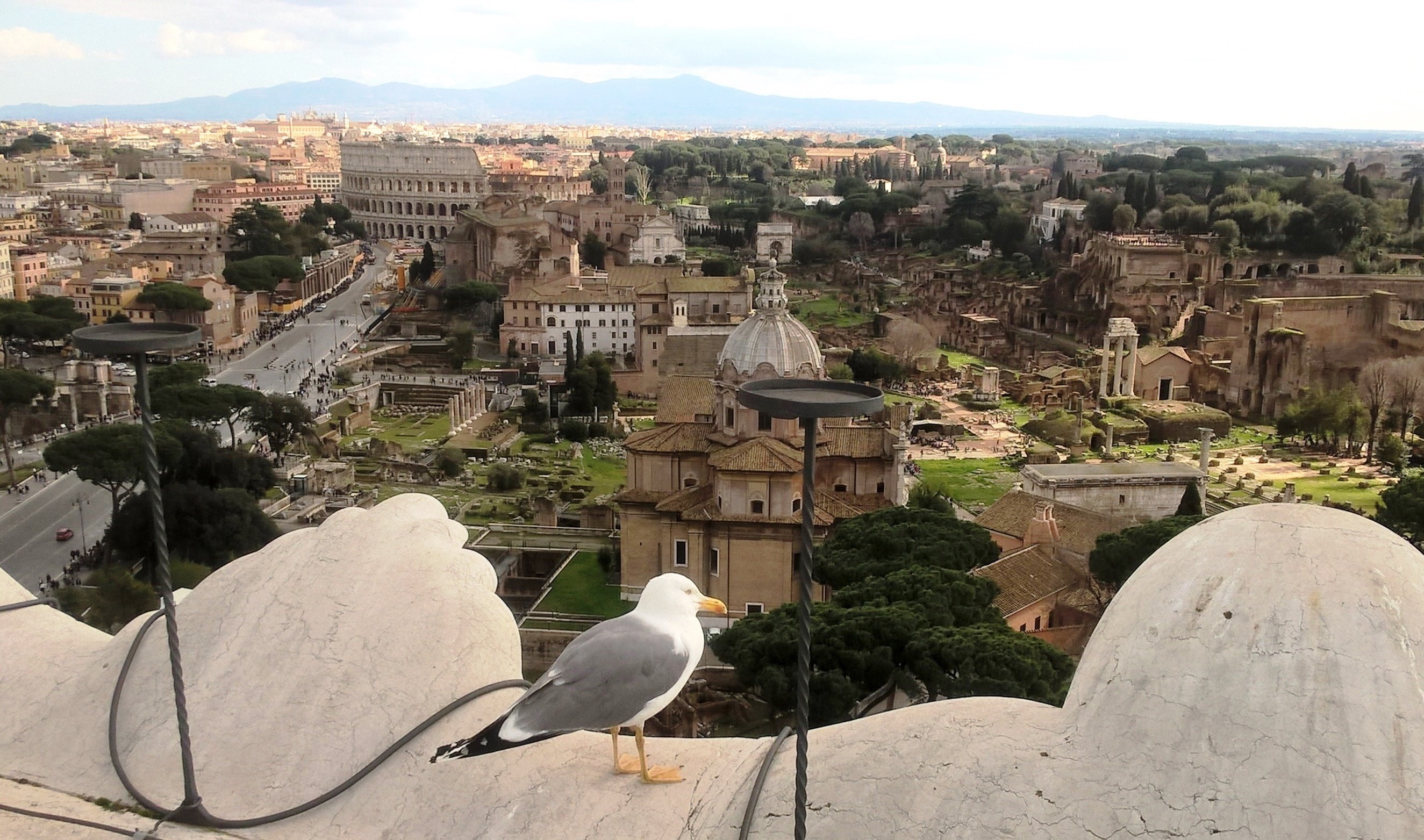 Overlooking the Colosseum and Forum Romanum from the Altare della Patria rooftop, right side
Overlooking the Colosseum and Forum Romanum from the Altare della Patria rooftop, right side
Located in the portico of the church of Santa Maria in Cosmedin, Bocca della Veritá (the Mouth of Truth) it is a big marble sculpture of the manlike face with open mouth. Legend says that if you are a liar and put your hand inside the Bocca della Verità, you’ll lose some fingers. The sculpture became famous to English-speaking culture when it was featured in the 1953 film entitled “Roman Holiday” with Audrey Hepburn and Gregory Peck.
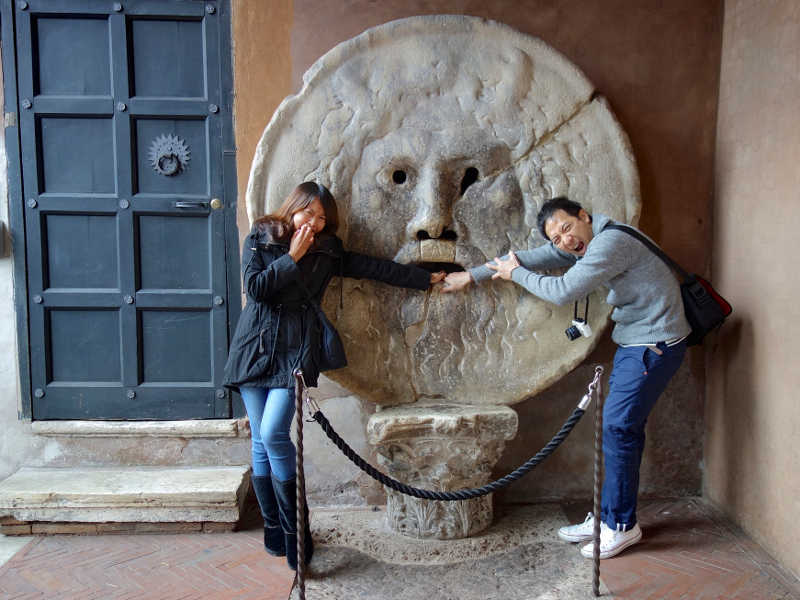 Bocca della Veritá, the church of Santa Maria in Cosmedin. Are you a lier? So then don´t put inside your hand. You will loose your fingers like these Asian tourists!
Bocca della Veritá, the church of Santa Maria in Cosmedin. Are you a lier? So then don´t put inside your hand. You will loose your fingers like these Asian tourists!
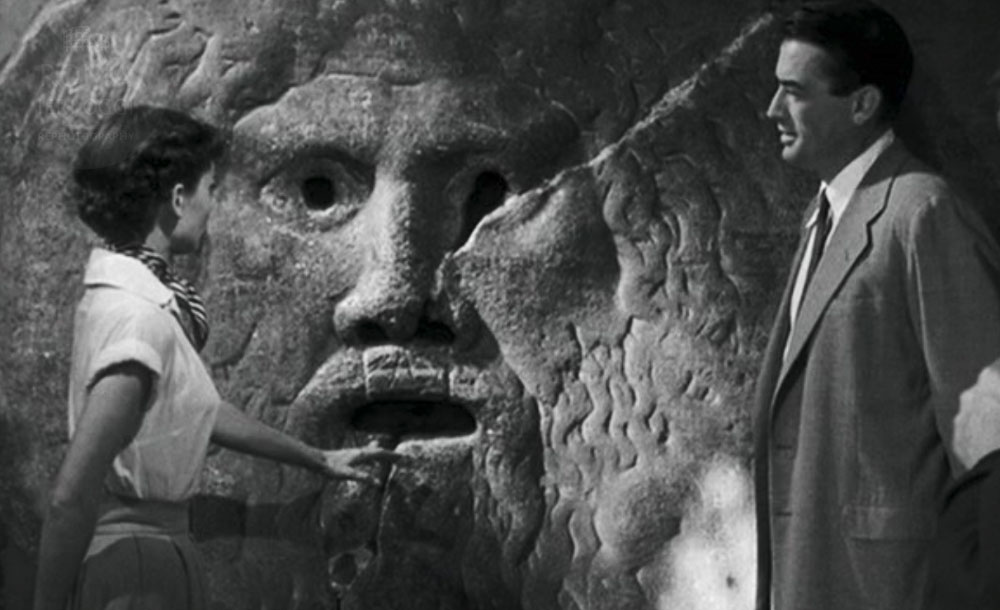 The sculpture Bocca della Veritá became famous thanks to the film from 1953 "Roman holiday" with Audrey Hepburn and Gregory Peck
The sculpture Bocca della Veritá became famous thanks to the film from 1953 "Roman holiday" with Audrey Hepburn and Gregory Peck
------------------------------------------------------------------------------------------------------------------------------------------------------
Program for the 2nd day (4-5 km hike):
Metro station: Piazza di Spagna (line A)
- Explore the most beautiful fountains of the world, the popular shopping street and other famous places:
- Spanish steps (Scalinata di Trinita dei Monti) - Fontana della Barcaccia (piazza di Spagna) - Fontana di Trevi - Pantheon - Fontana dei Quatro Fiumi (piazza Navona) - via del Corso - piazza del Popolo
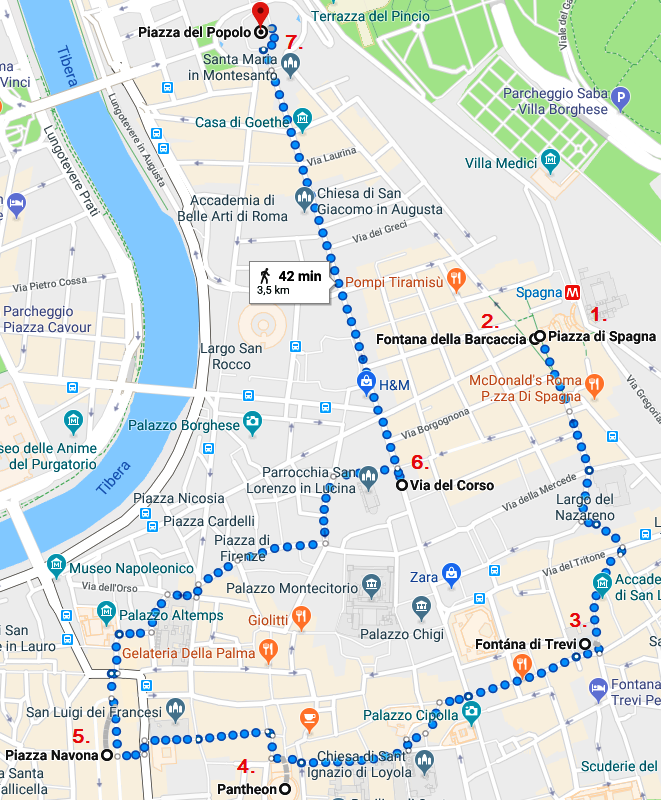
Located in Piazza di Spagna, the Baroque staircase called “Spanish steps” (Scalinata di Trinita dei Monti) is a steep set of steps leading to the church of Santa Trinità dei Monti. They were built in 1723 at the instigation of Pope Innocent XIII. and are one of the most famous staircases in the world. Although there is permanently a concentration of a lot of people, it is worth climbing up, sit down, relax and enjoy the atmosphere overlooking the fontana (fountain) della Barcaccia.
 Spanish steps leading to the church of Santa Trinitá dei Monti are constantly full of tourists and locals
Spanish steps leading to the church of Santa Trinitá dei Monti are constantly full of tourists and locals
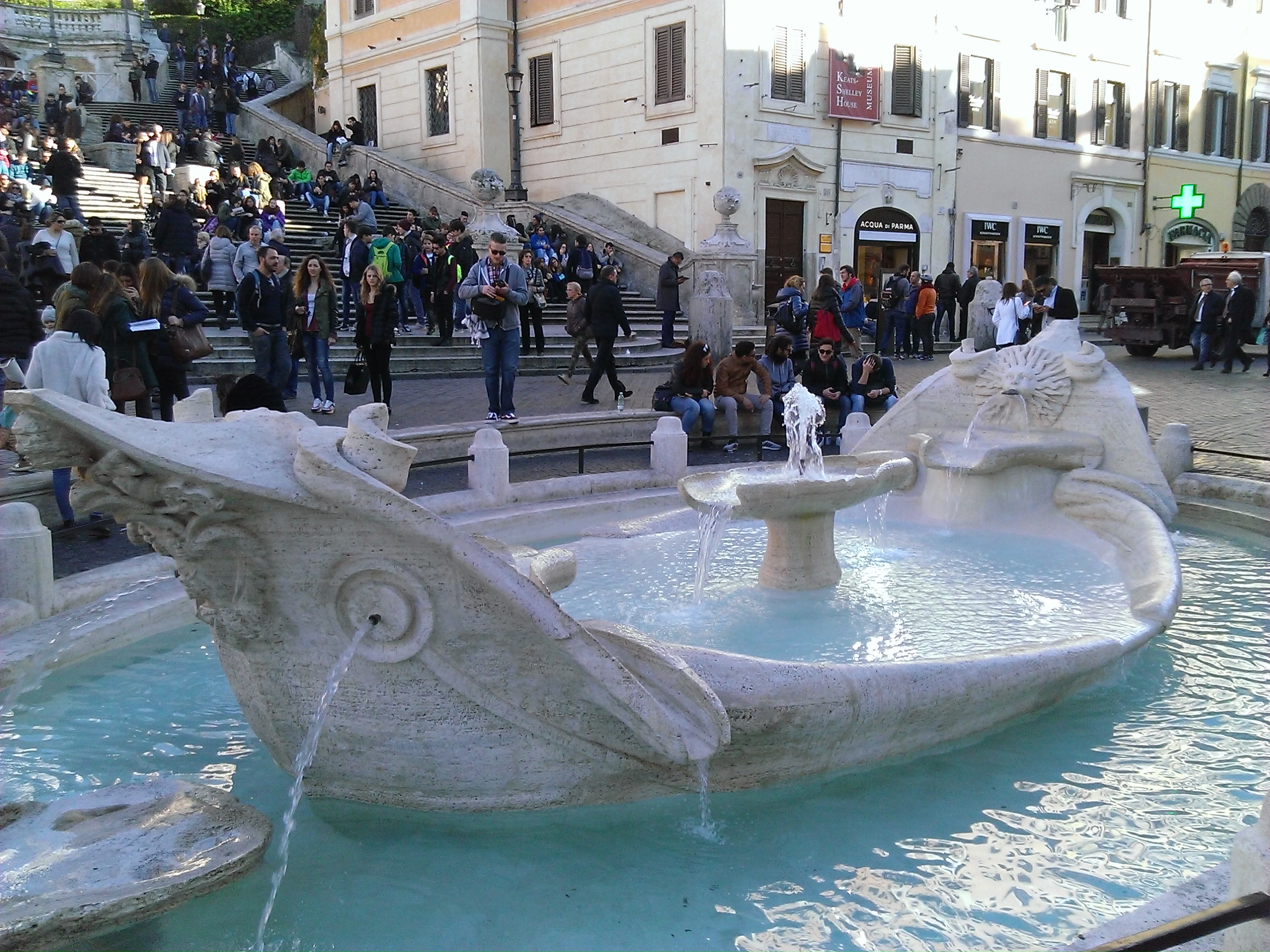 Fontana (fountain) della Barcaccia was built under Spanish steps in Piazza di Spagna
Fontana (fountain) della Barcaccia was built under Spanish steps in Piazza di Spagna
Trevi Fountain is impressive Baroque monument dominating the small Trevi square in the Quirinale district. It was immortalised in the movie La Dolce Vita with the legendary Anita Ekberg. The masterpiece, built by Niccola Salvi and Bernini, was finished in 1762. The central figure of the fountain is Neptune - God of the sea, riding a chariot in the shape of a shell, pulled by two sea horses. Each sea horse is guided by a Triton. One of the horses is calm and obedient, the other one restive. They symbolize the fluctuating moods of the sea.

Pantheon (from Greek: pan - all and theoi - gods) is an ancient circular temple in Rome, originally devoted to all the gods, and since 609 dedicated to the Virgin Mary of the Martyrs (Santa Maria dei Martiri, also Santa Maria Rotonda). It belongs to the most important and most preserved ancient temples and buildings in general. The temple was built by Marcus Vipsanius Agrippa (son-in-law of Emperor Augustus) from 29 to 19 BC, in the form of a basilica as a private sanctuary. After 80 AD, the temple - perhaps after the fire - was restored after Emperor Domitian. Today's circular form of the Pantheon dates from the time of the emperor Hadrian († 138).
 Pantheon - the best preserved ancient temples of the world
Pantheon - the best preserved ancient temples of the world
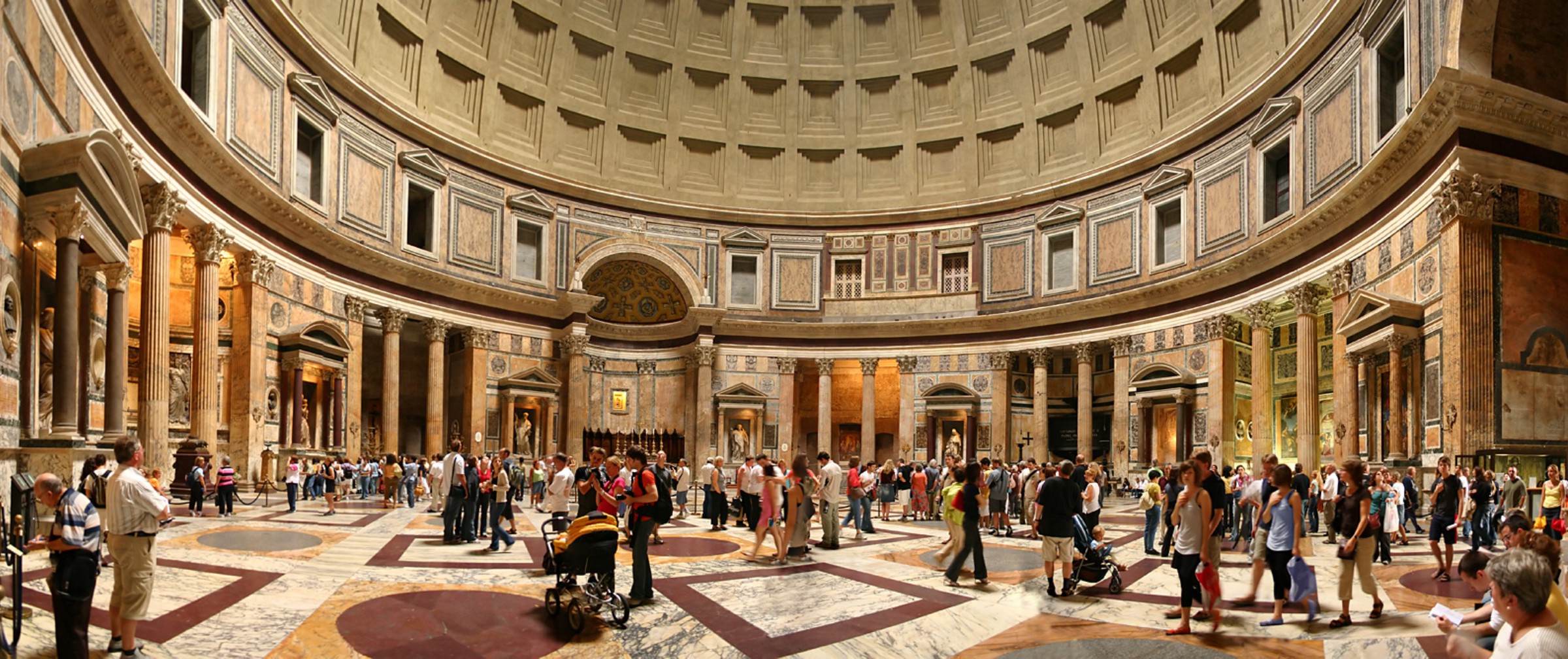 Interior of Pantheon
Interior of Pantheon
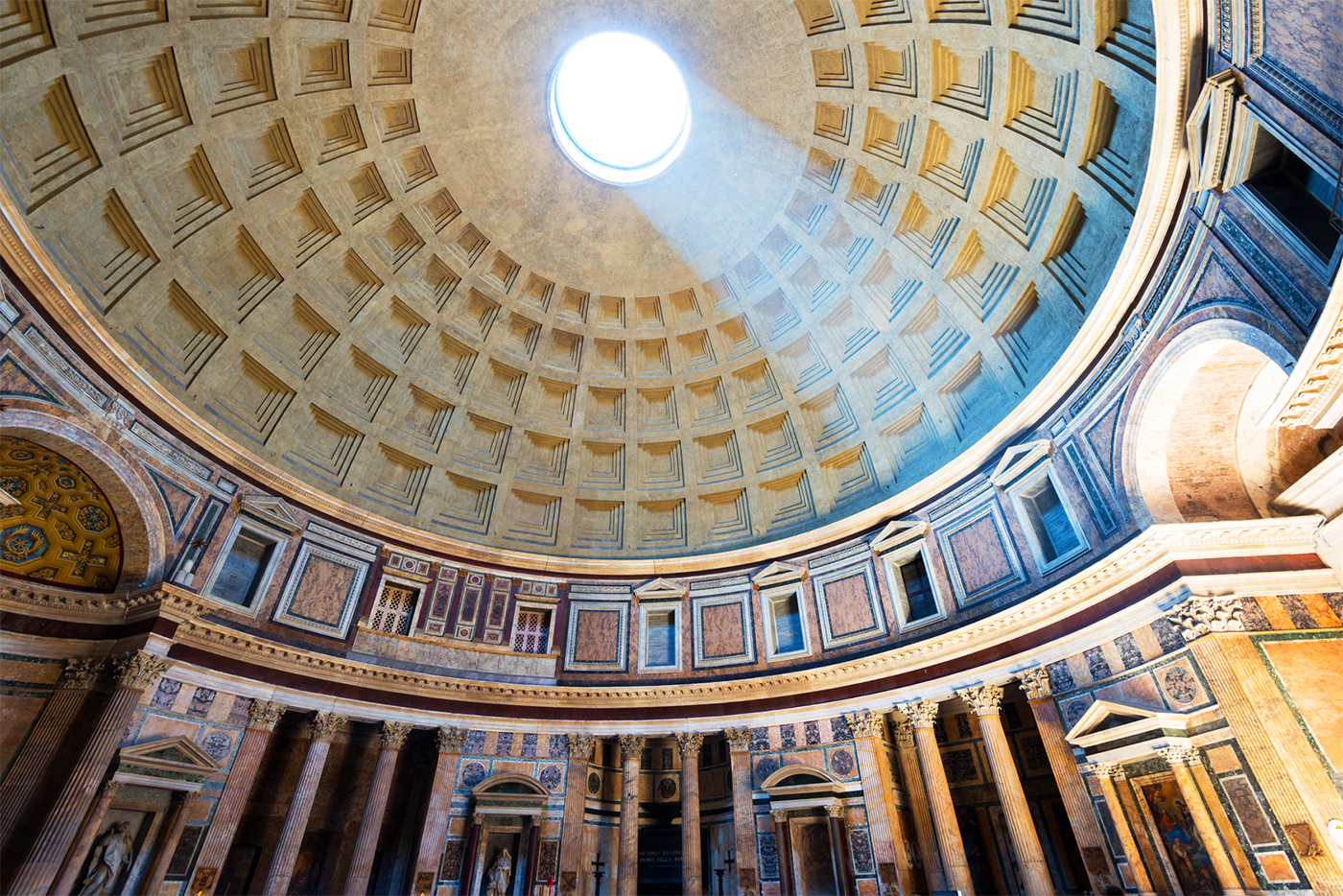 The cupole of Pantheon
The cupole of Pantheon
Located in the middle of Piazza Navona, the Fountain of The Four Rivers (Fontana dei Quattro Fiumi) is the name of a Roman masterpiece made in 1648-1651 by an Italian Baroque sculptor and architect Gian Lorenzo Bernini. The center of the massive reservoir forms an artificial rock of irregular shape from the travertin. On each corner of the rock are personified four major world rivers - Nile, Ganges, Danube and Rio de la Plata.
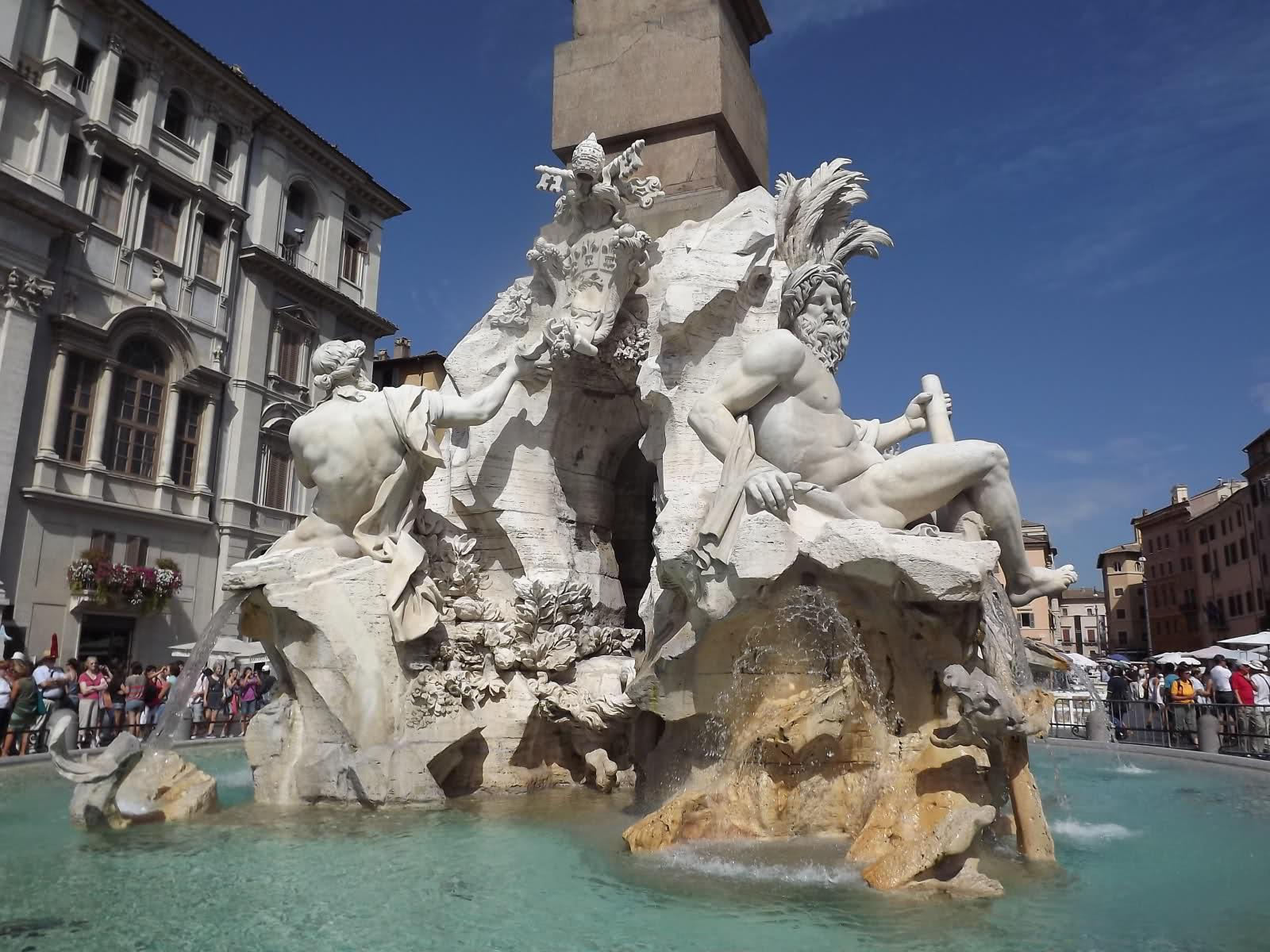 Fontana dei Quattro Fiumi, Piazza Navona
Fontana dei Quattro Fiumi, Piazza Navona
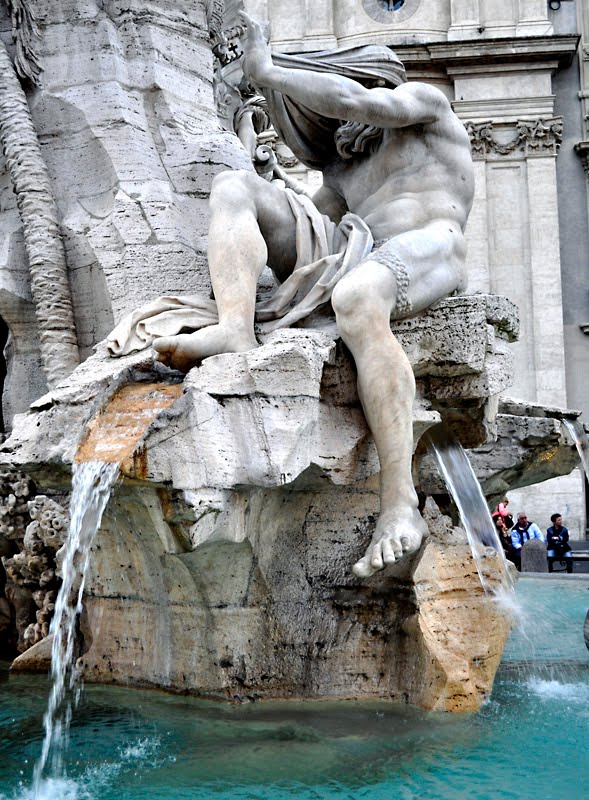 The statue depicting the river Nile in Fontana dei Quattro Fuimi, Piazza Navona
The statue depicting the river Nile in Fontana dei Quattro Fuimi, Piazza Navona
Via del Corso is a 1,5 km long and straight boulevard forming the eastern border of Rome's historic center. It is one of Rome's main avenues leading from Piazza Venezia (Venice square) to Piazza del Popolo (People´s square). There are many winding streets in Rome, so direct street Via del Corso is very unusual.
At present, Via del Corso is the most important shopping area with many luxurious boutiques and other shops. For lovers of clothing who do not have large amounts of money, this boulevard is ideal because you can find affordable goods here.
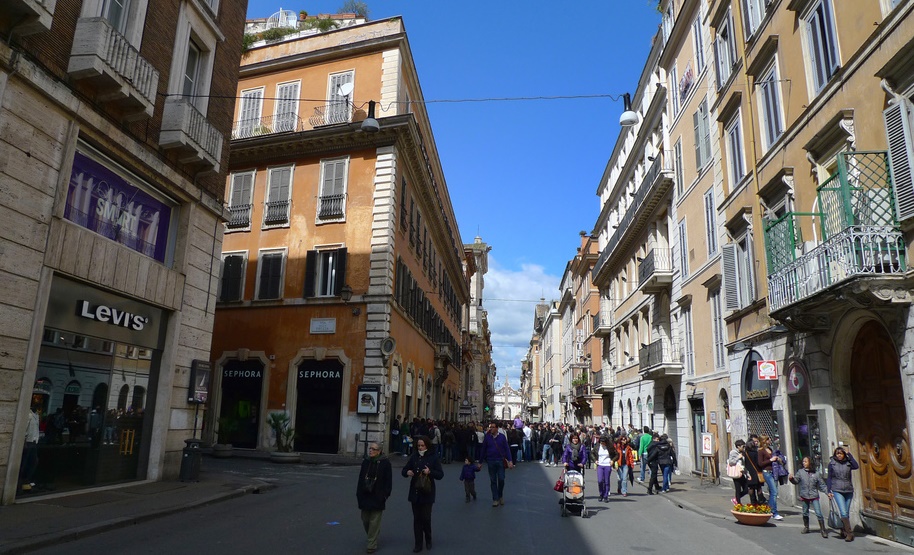 Via del Corso - 1,5 km long shopping avenue leading from Piazza Venezia to Piazza del Popolo. The northern part is a pedestrian zone.
Via del Corso - 1,5 km long shopping avenue leading from Piazza Venezia to Piazza del Popolo. The northern part is a pedestrian zone.
The history of Piazza del Popolo (People´s square) dates back to 1538, when it was the scene of public executions (the last execution took place here in 1826). Today's neo-classical style was designed and built by the architect Valadier in 1815-1816.
In the middle of Piazza del Popolo, there is the Egyptian obelisk called Flamine (from the Ramses II period) which was delivered to Rome by the emperor Augustus Caesar.
On the southern side of the square, there are the Baroque churches called “twins” of Santa Maria dei Montesanto (on the left looking at Via Corso) and Santa Maria dei Miracoli, built by Carlo Rainaldi, Bernini and Carlo Fontana. Although the two churches look almost the same from the outside, the interiors are different.
There is also the third church in the square - basilica di Santa Maria del Popolo, where famous Italian arts can be seen (e.g. Caravaggio). The church was built next to the vaulted gate Porta del Popolo from 15th century (originally used to be a gateway to the ancient Rome).
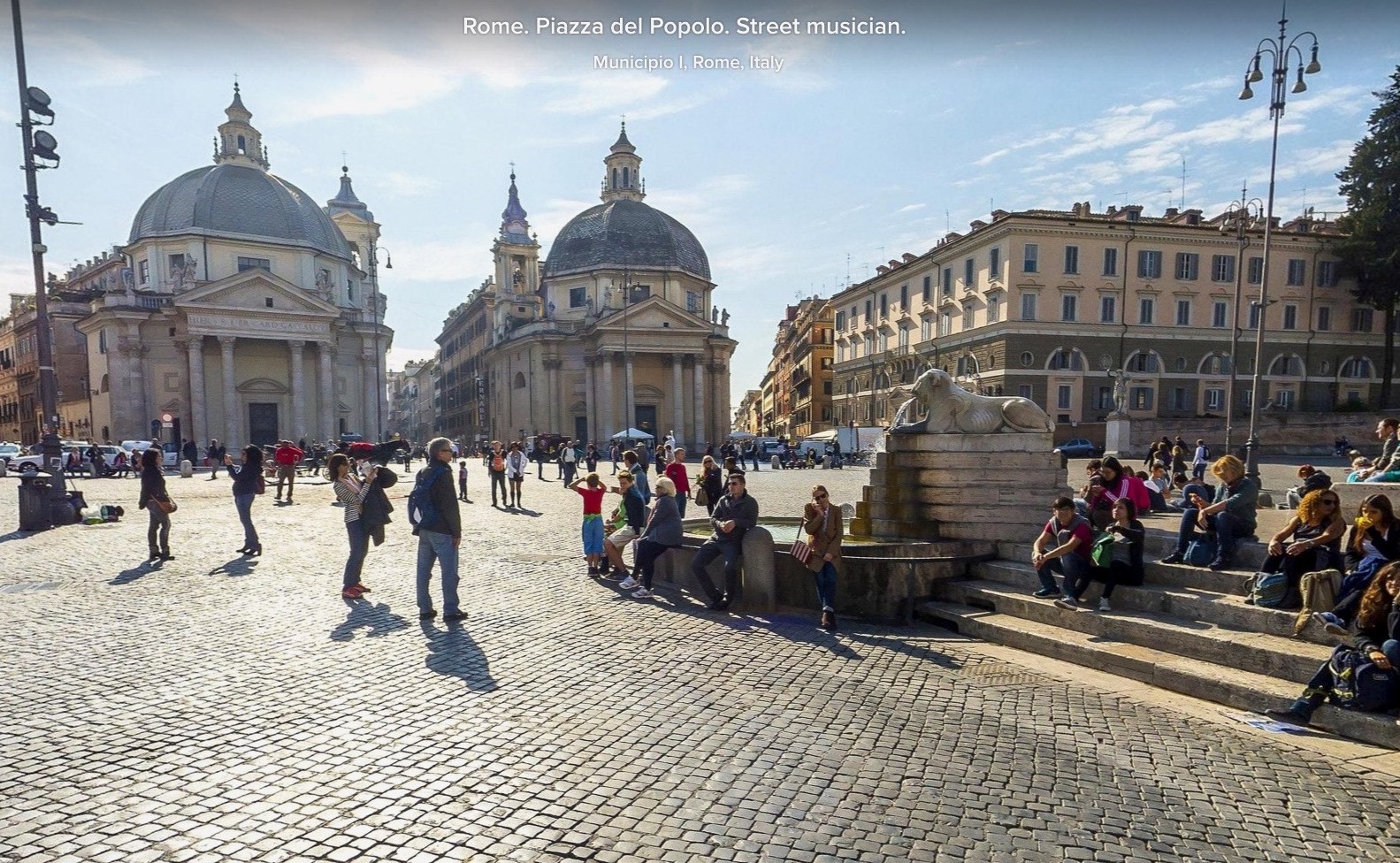 source: www.romaierioggi.it; piazza del Popolo (People´s square), Rome
source: www.romaierioggi.it; piazza del Popolo (People´s square), Rome
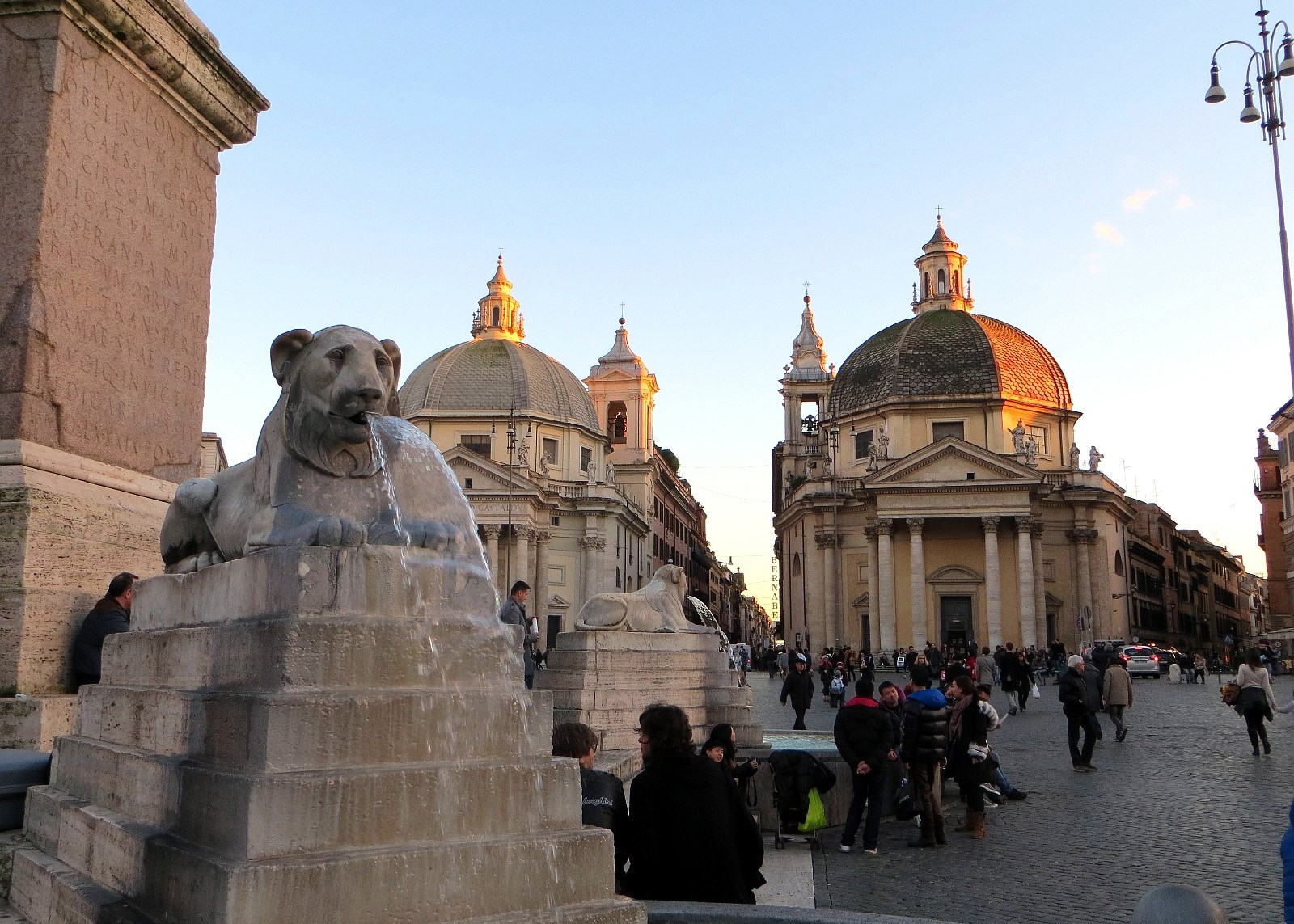 source: www.fatherjerabek.com; piazza del Popolo (People´s square), Rome
source: www.fatherjerabek.com; piazza del Popolo (People´s square), Rome
------------------------------------------------------------------------------------------------------------------------------------------------
Program for the 3rd day (3-4 km hike):
Metro station: Ottaviano (line A)
- Explore Vatican and Angel´s Castle:
- Piazza San Pietro - Basilica di San Pietro - Sistine Chapel - Castel Sant´ Angelo

St. Peter´s basilica is a major basilica in Vatican City, an enclave of Rome, one of the largest church ever built and it remains one of the holiest sites in Christendom. St. Peter's Basilica stands on the traditional site where Peter - the apostle who is considered the first pope - was crucified and buried. St. Peter's tomb is under the main altar and many other popes are buried in the basilica as well. Originally founded by Constantine in 324, rebuilt in the 16th century by renaissance masters including Bramante, Michelangelo and Bernini.
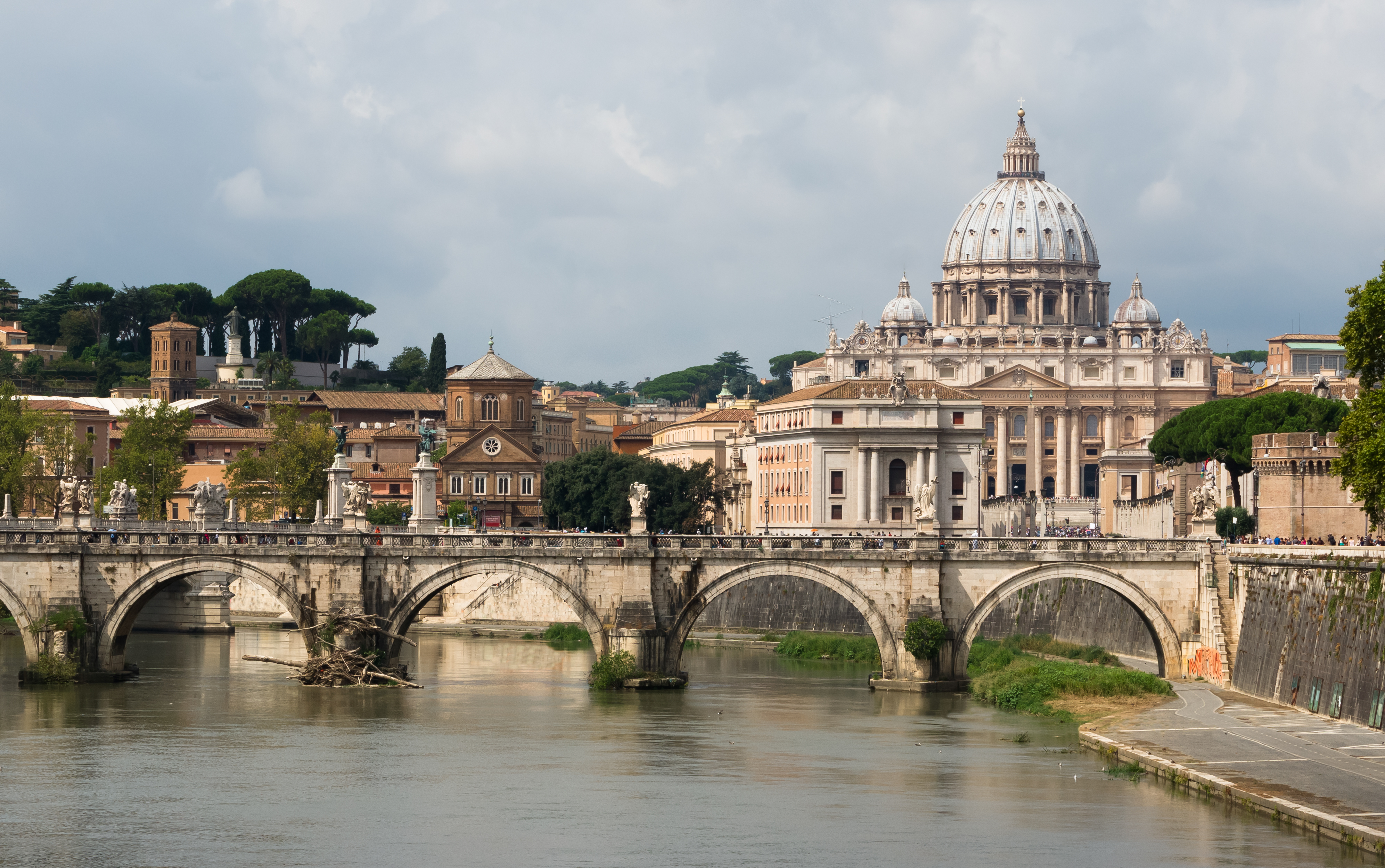 The view from the Angel´s bridge to the St. Peter´s basilica
The view from the Angel´s bridge to the St. Peter´s basilica
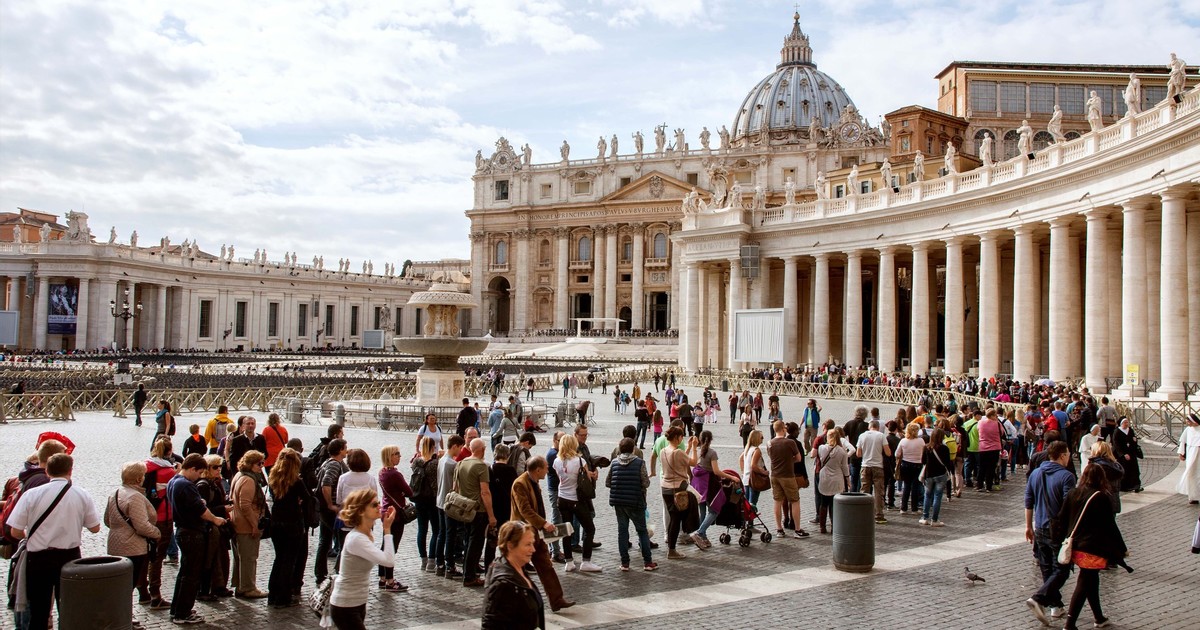 The queue in Piazza San Pietro to the St. Peter´s basilica, Vatican
The queue in Piazza San Pietro to the St. Peter´s basilica, Vatican
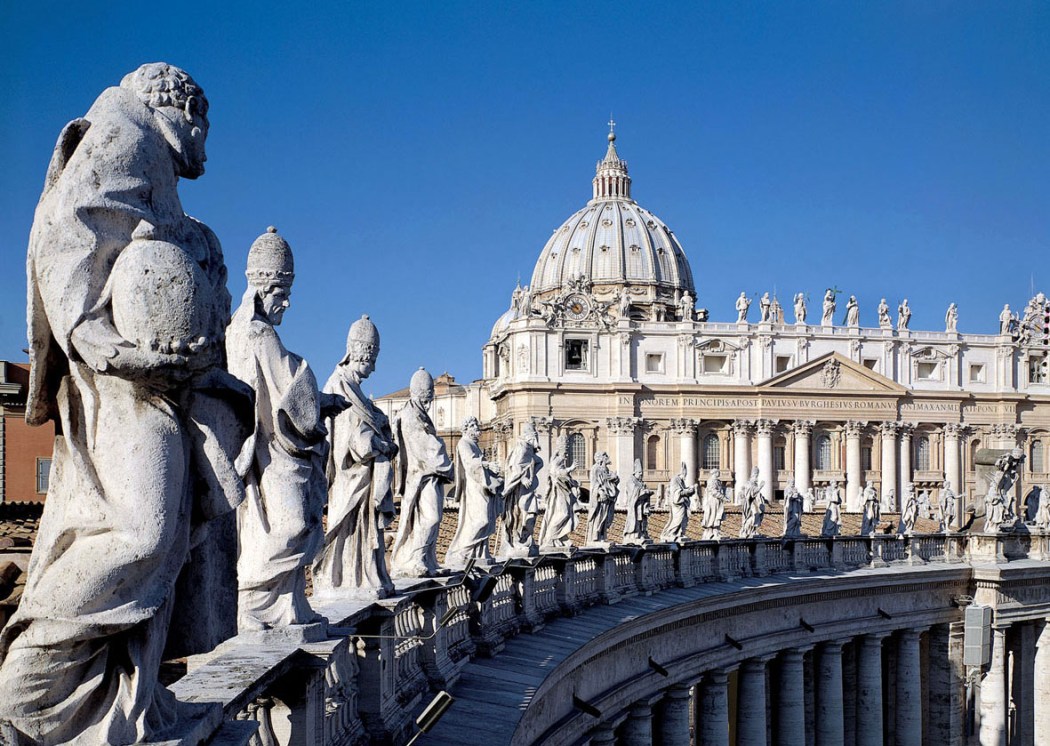 The collonade´s roof decorated with statues of saints in Piazza di San Pietro
The collonade´s roof decorated with statues of saints in Piazza di San Pietro
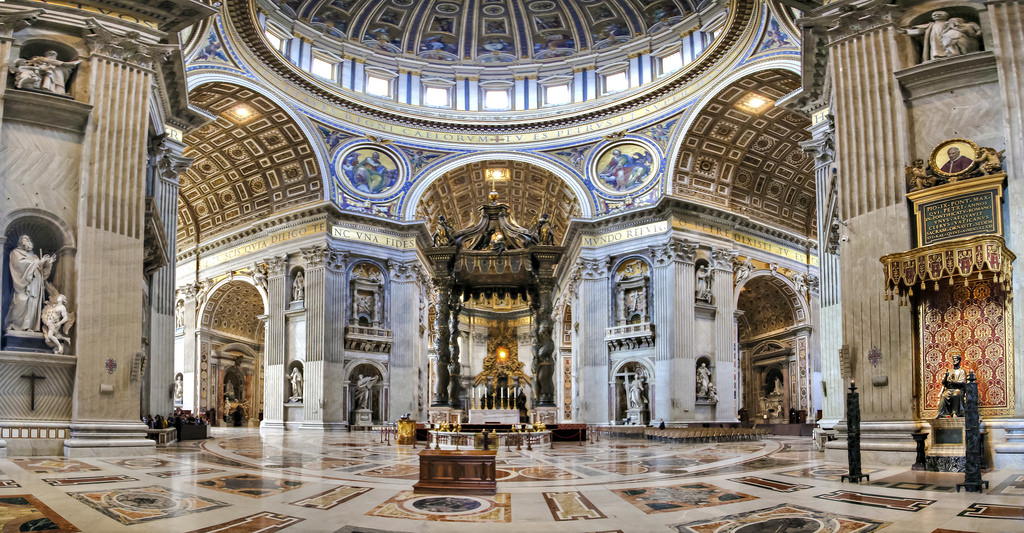 Interior of St. Peter´s basilica
Interior of St. Peter´s basilica
Thanks to the extraordinary talent of Michelangelo Buonarroti (1475-1564), the Sistine Chapel (Cappella Sistina) in Vatican City has become one of the most famous art galleries in the western world. Michelangelo's famous Sistine ceiling depicts scenes from Genesis in dramatic and moving detail, while The Last Judgment on the end wall is striking and powerful. The side walls are covered with important Renaissance frescoes by other artists, depicting biblical scenes and contemporary popes.
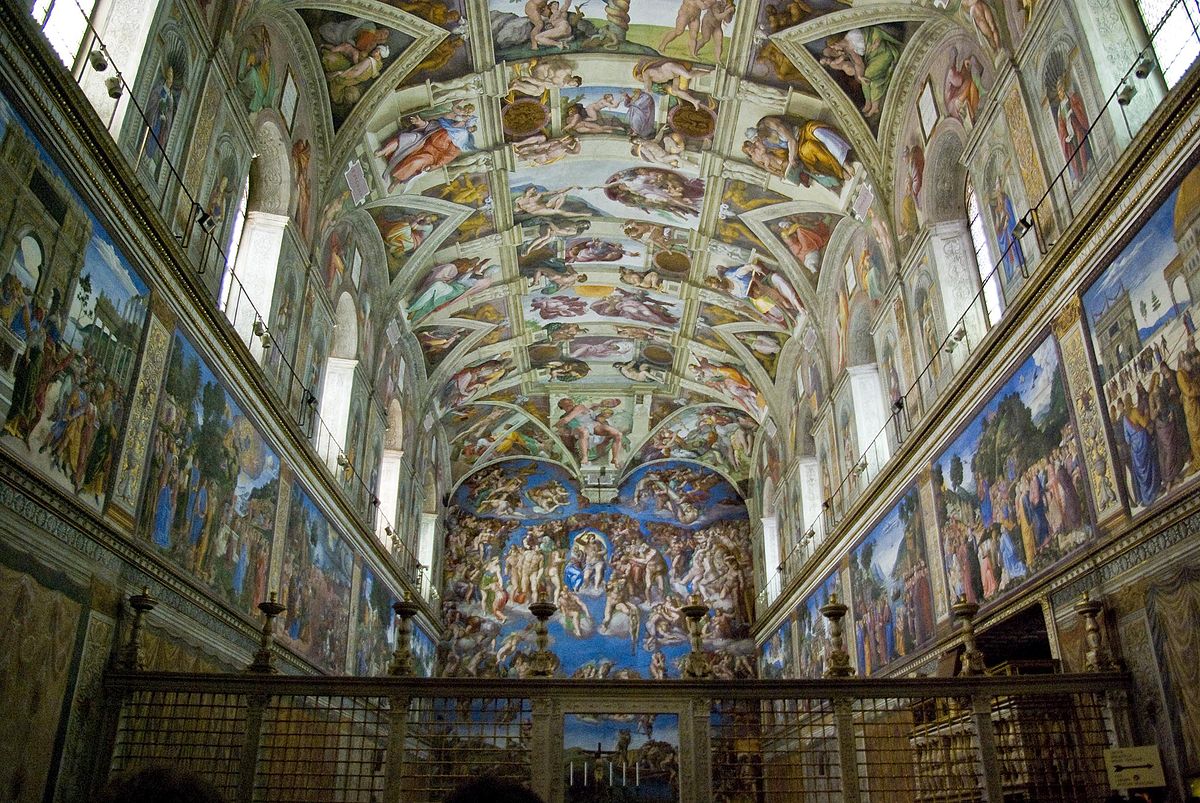 Michelangelo´s famous Sistine chapel, Vatican
Michelangelo´s famous Sistine chapel, Vatican
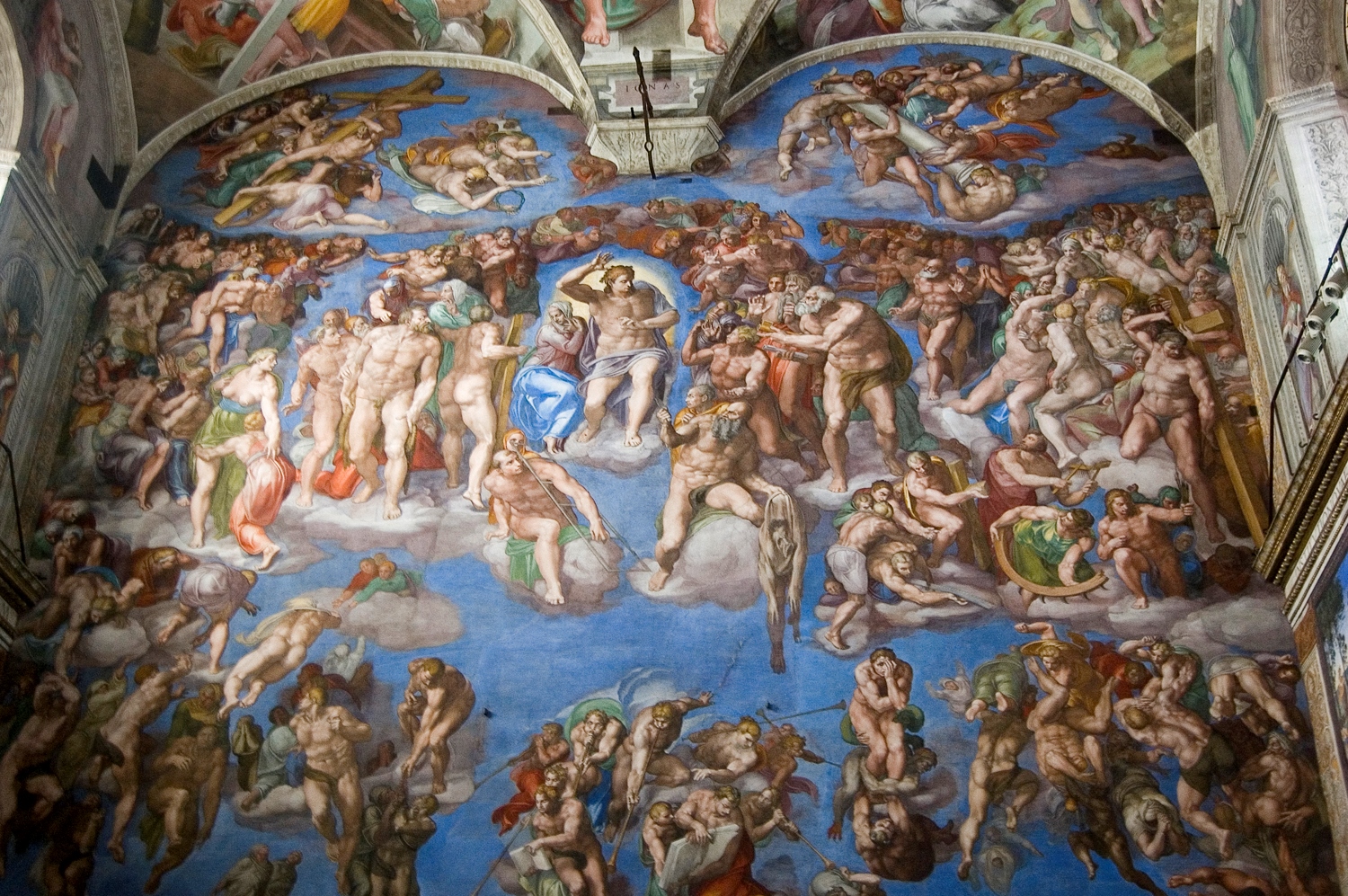 The impressive "Last Judgement" by Michelangelo, Sistine chapel, Vatican
The impressive "Last Judgement" by Michelangelo, Sistine chapel, Vatican
Castel Sant' Angelo (also knows as the Mausoleum of Hadrian) is located on the banks of the Tiber close to the Vatican. This Fortress was built as a mausoleum for the Emperor Hadrian (AD130-139), but it has also been a prison and a papal residence. At present it has various exhibits ranging from Renaissance paintings and pottery to antique military weapons. The view from the terrace is amazing.
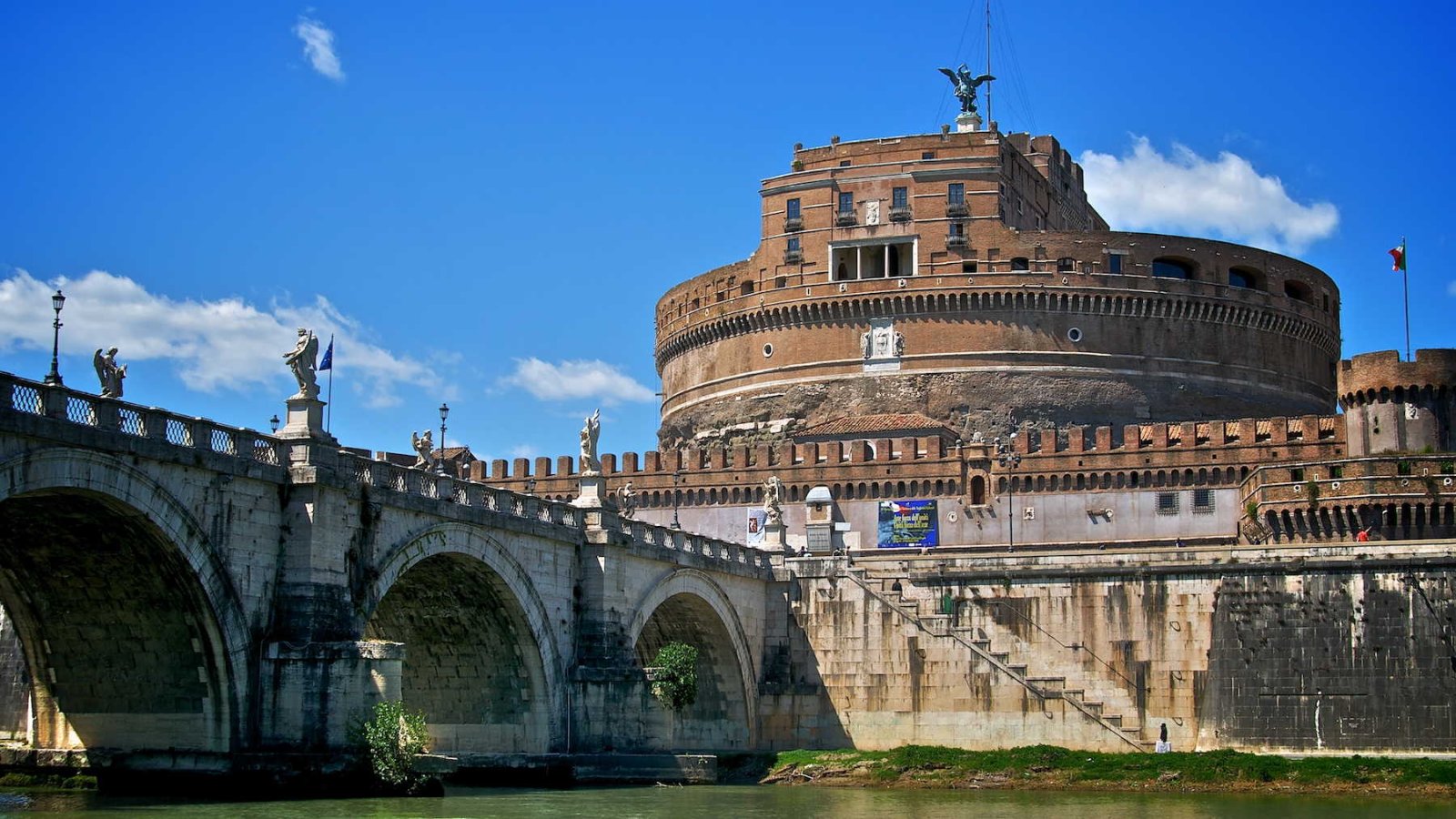 Castel di Sant´ Angelo (The Mausoleum of Hadrian)
Castel di Sant´ Angelo (The Mausoleum of Hadrian)
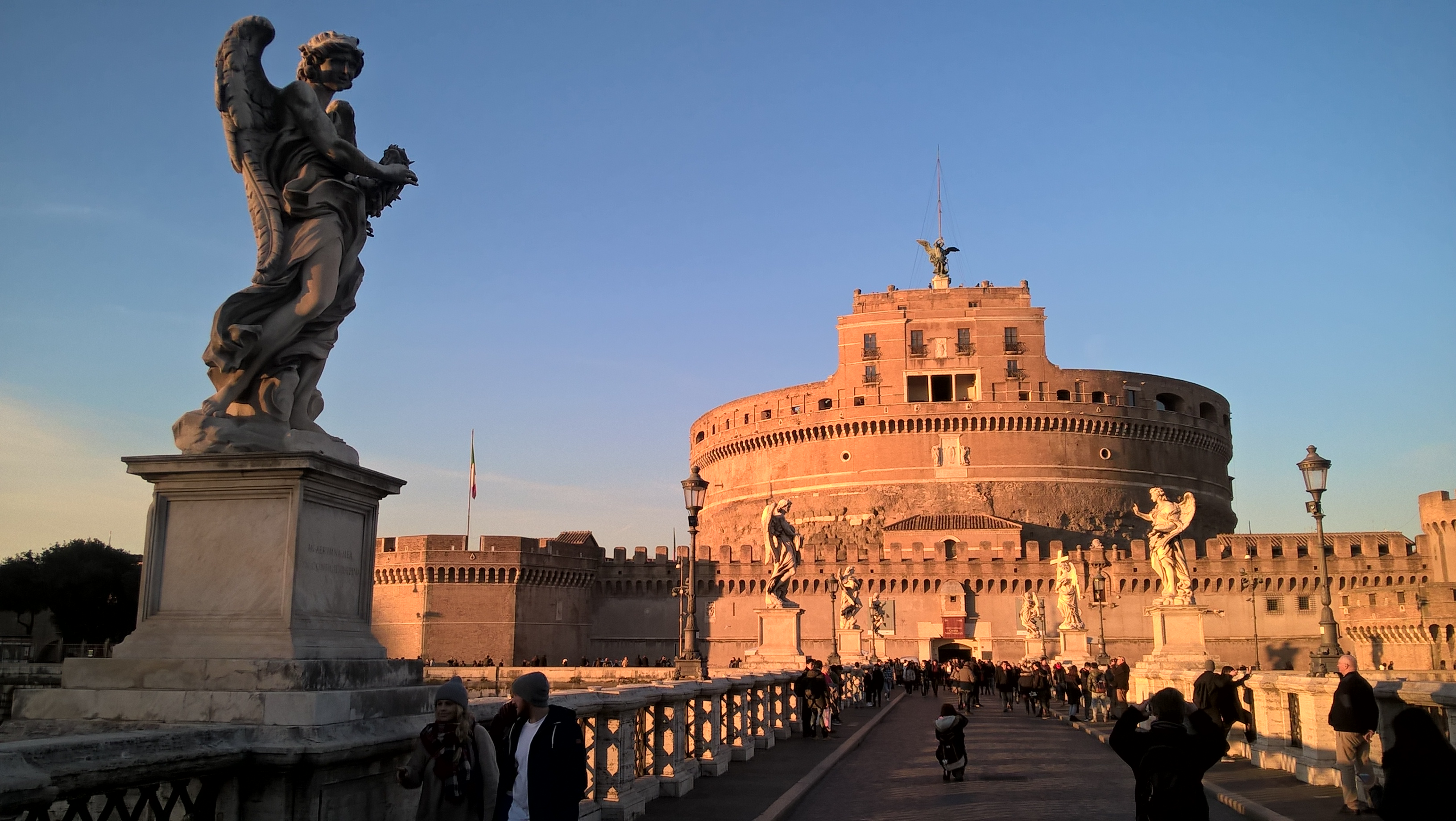 Ponte Sant´ Angelo (Angel´s bridge)
Ponte Sant´ Angelo (Angel´s bridge)
Do you still have energy and time :-) ?
- Then definitely visit the park Villa Borghese and Galleria Borghese!
- Metro station: Barberini or Spagna (line A)
Galeria Borghese is one of the most beautiful small museums in the world. Its collections are housed in a magnificent 17th-century villa and offer a compact course in the Italian aesthetic. In 20 rooms, you are exposed to antiquities, the Renaissance and the beginnings of baroque art. Visits to the Galleria in the northeast corner of the park Villa Borghese are by reservation, which allows you the pleasure of seeing the Bernini masterpieces without being crowded out.
 Interior of Galerie Borghese
Interior of Galerie Borghese
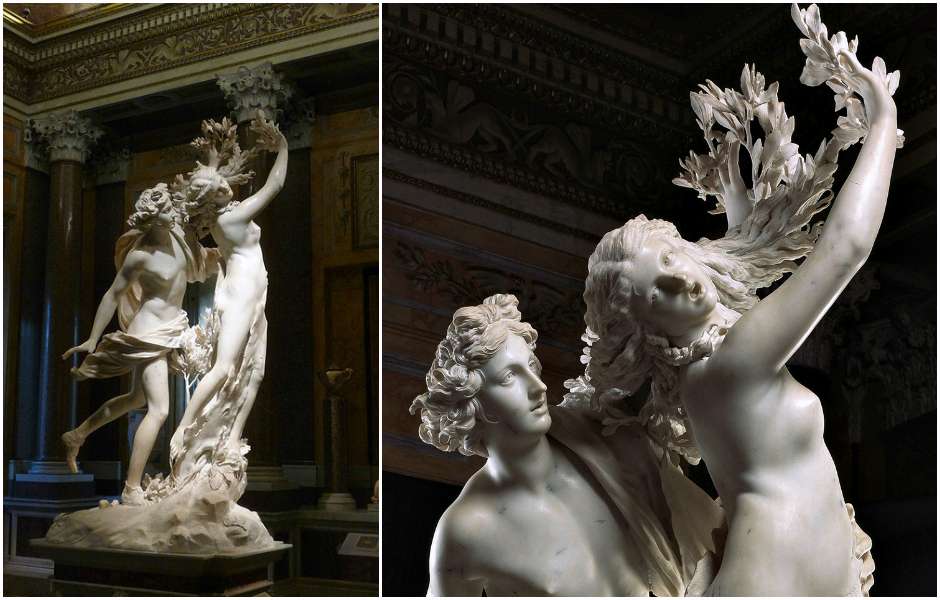 source: www.italyxp.com; Apollo and Daphe from Berninini, Galeria Borghese
source: www.italyxp.com; Apollo and Daphe from Berninini, Galeria Borghese

























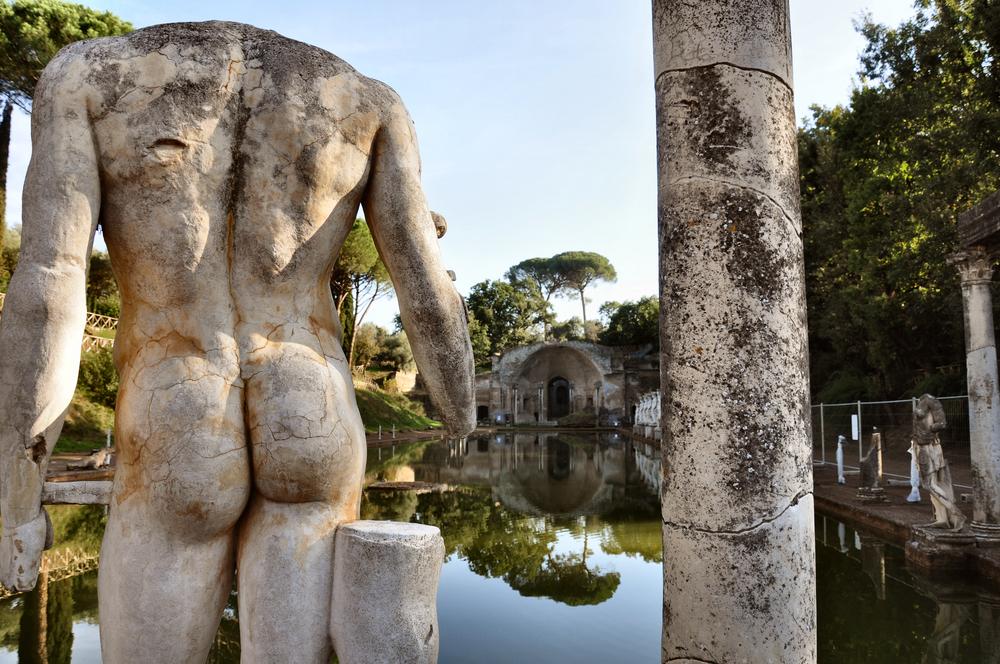




Comments (0)